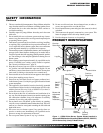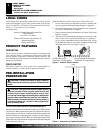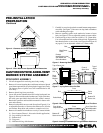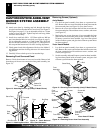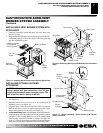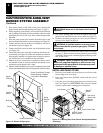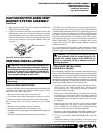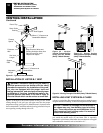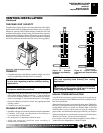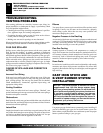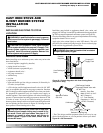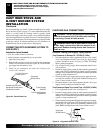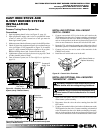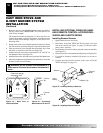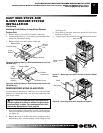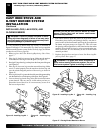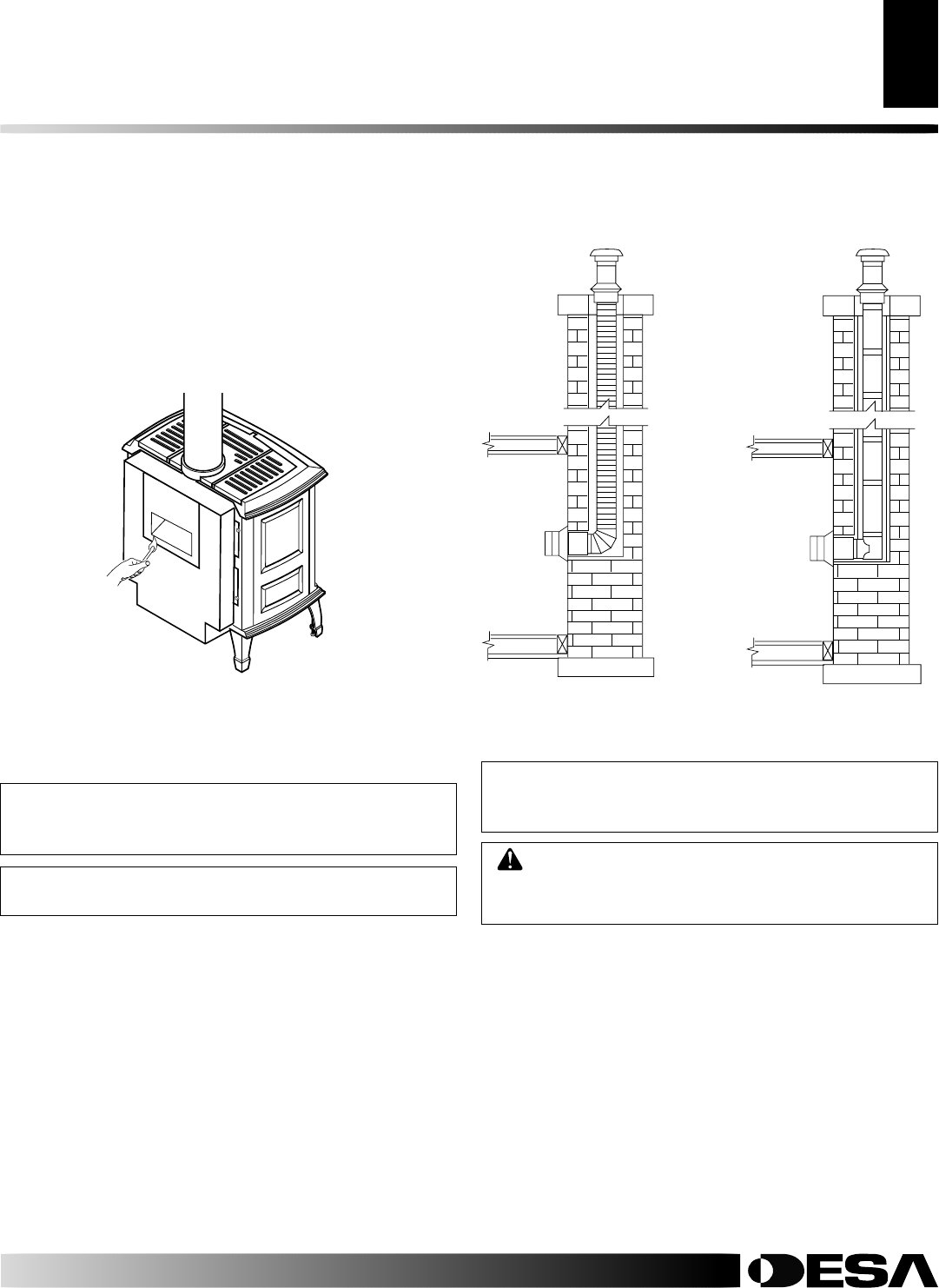
106828-01D
For more information, visit www.desatech.com
For more information, visit www.desatech.com
11
11
VENTING INSTALLATION
Continued
CHECKING VENT CAPACITY
Complete all gas piping, electrical, and vent connections. After adjust-
ing the burner system and lighting the main burners, allow a couple of
minutes for warm-up. Hold a lighted match just under the rim of the
draft hood relief opening. Proper venting will draw the flame toward or
into the draft hood. Improper venting, indicated by escape or spillage of
burned gas, will cause match to flicker or go out. Smoke from a cigarette
will also be pulled into the draft hood if the vent is drawing properly.
Figure 25 - Test for Proper Venting
CHIMNEYS
• Complete familiarity with chimney condition, height, size, clear-
ance to combustibles and other factors is essential.
NOTICE: Consult the authority having jurisdiction
in your area regarding masonry chimney venting
applications.
NOTICE: A complete chimney inspection by a quali-
fied person should be performed.
• Appliances using B-vent connectors to vent into a masonry or
factory-built chimney should not exceed 1
1
/2 feet in length for
every inch of connector diameter (3" vent connector has a maxi-
mum 4
1
/2 foot length; 5" connector has maximum 7
1
/2 foot length).
• Oversized chimneys should be relined with appropriate listed
relining systems.
• Cleanout access may be required.
NOTICE: Consult the authority having jurisdiction in
your area regarding listed chimney liner venting
applications.
WARNING: Operation of improperly installed and
maintained venting system could result in serious
injury, property damage, or loss of life.
RELINING SYSTEMS
• Suitability and approval of relining materials should be determined.
• Condition, size, height, and termination of the chimney to
be relined must be determined.
• No substitution of components should be made.
• Joints and connectors should be made according to
manufacturer’s instructions.
Figure 26 - Straight
Installation into Masonry
Chimney
Figure 27 - Typical Straight
Installation with Listed Chimney
Liner
HIGH ALTITUDE INSTALLATION
Your DESA B-vent burner system has been AGA tested and ap-
proved for elevations from 0-2000 feet and CGA certified for eleva-
tions from 0-4500 feet.
When installing this burner system at an elevation above 2000 feet (in
the USA), you may need to decrease the input rating by changing the
existing burner orifice to a smaller size. Reduce input 4% for each
1000 feet above sea level. Check with your local gas company for
proper orifice size identification and proper orifice for your location.
When installing this stove and burner system at an elevation above
4500 feet (in Canada), check with local authorities.
For assistance with any high altitude installation contact DESA’s
Technical Service Department at 1-866-672-6040.
VENTING INSTALLATION
Checking Vent Capacity
Chimneys
Relining Systems
High Altitude Installation



